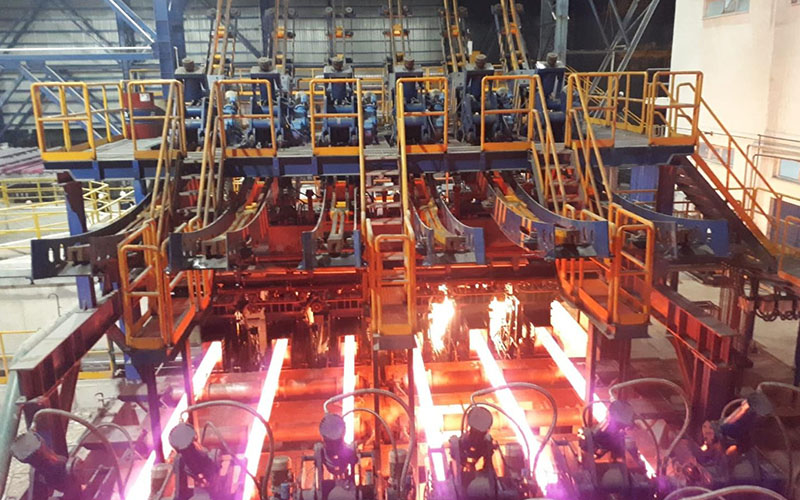Industry News
Continuous Casting Process
Author : Hani Time : 2020/04/24
Continuous casting is the intermediate link between steelmaking and steel rolling, and is an important part of steelmaking plant (or workshop). The technological process of continuous casting production is: ladle → tundish → crystallizer → secondary cooling → straightening of billet → cutting → roller conveyor → steel pusher → casting billet.
1. Overview
Continuous casting is the intermediate link between steelmaking and steel rolling, and is an important part of steelmaking plant (or workshop). The technological process of continuous casting production is: ladle → tundish → crystallizer → secondary cooling → straightening of billet → cutting → roller conveyor → steel pusher → casting billet. The application of continuous casting technology has completely changed the production process and logistics control of the steelmaking workshop, and provided conditions for the continuity of workshop production, the application of automation and information technology, as well as a significant improvement in the environment and product quality. In addition, the development of continuous casting technology will also promote the development of other industries in the metallurgical system, which will play an important role in simplifying and optimizing the organization and product structure of enterprises.
2. Features of continuous casting
In the continuous casting process, the molten steel releases sensible and latent heat in a continuous state, and gradually solidifies into a certain shape of slab. In this process of transition from liquid to solid, there is momentum, heat and mass transmission, deformation caused by phase change, external force and stress in the system. These processes are very complicated, often coupled or interacting with each other. Compared with the die-casting and preliminary rolling process, the continuous casting process has the following advantages.
(1) Simplified the technological process of casting billet production, eliminating the process of demoulding, steel ingot soaking and blanking procedures in the casting process, infrastructure investment can be saved by 40%, floor space can be reduced by 30%, and operating costs can saved by 40%, and the consumption of refractories can be reduced by 15%.
(2) The metal yield is improved, on the one hand, the loss of the head and tail of the billet is greatly reduced; on the other hand, the cast billet produced is closer to the shape of the final product, eliminating the heating billet opening process of the die casting process, reducing the metal loss, and the metal recovery rate can be increased by about 9%.
(3) The energy consumption in the production process is reduced, the combustion power consumption of the steel billet soaking furnace can be omitted, and the energy consumption can be reduced by 1/4 to 1/2.
(4) The level of mechanization and automation of the production process has been improved, which has created favorable conditions for the improvement of labor productivity and the upgrading of modern management of enterprises.
4. Outlook of continuous casting technology
In terms of production capacity: With the industrialization of electromagnetic combination crystallizer, non-sinusoidal vibration, light reduction, and solidification dynamic control technology, the output of slab continuous casting machine reached 2 million tons per year, and the output of square billet continuous casting machine reached 40 10,000 tons / flow per year.
In terms of variety structure: With the application of electromagnetic technology and solidification control technology, continuous casting varieties will be expected to achieve 100% of the variety, and realize organizational control, internal and surface quality control, to achieve efficient production of all defect-free billets.
In the field of electromagnetic continuous casting: With the development of superconducting technology, the industrialization of electromagnetic confinement crystallizers and electromagnetic shock devices for pouring steel will become possible. On this basis, it is expected to develop the continuous casting machine that has no mold, no vibration, and any combination of cross-sectional shapes.

TAG: continuous casting steel rolling continuous casting processcontinuous casting production steel making rolling process


